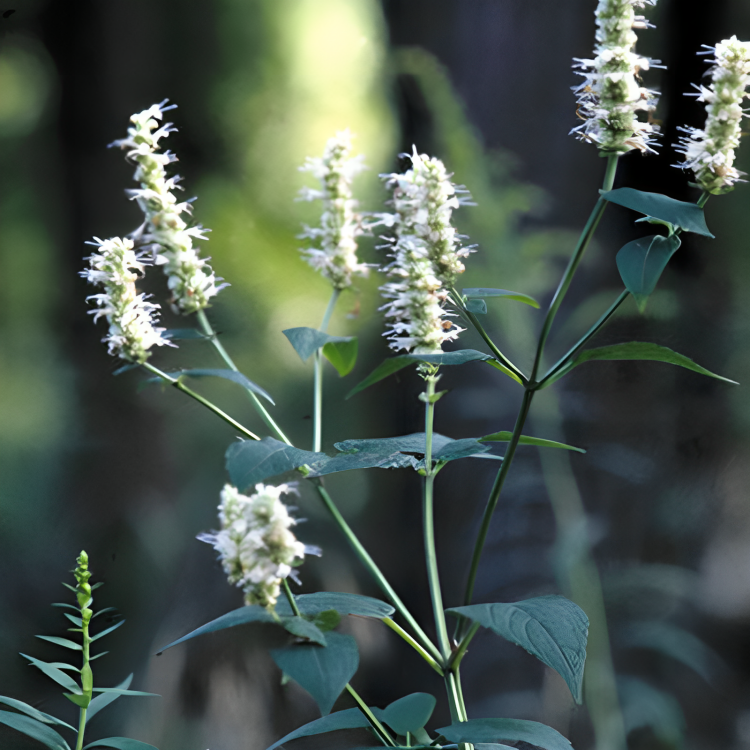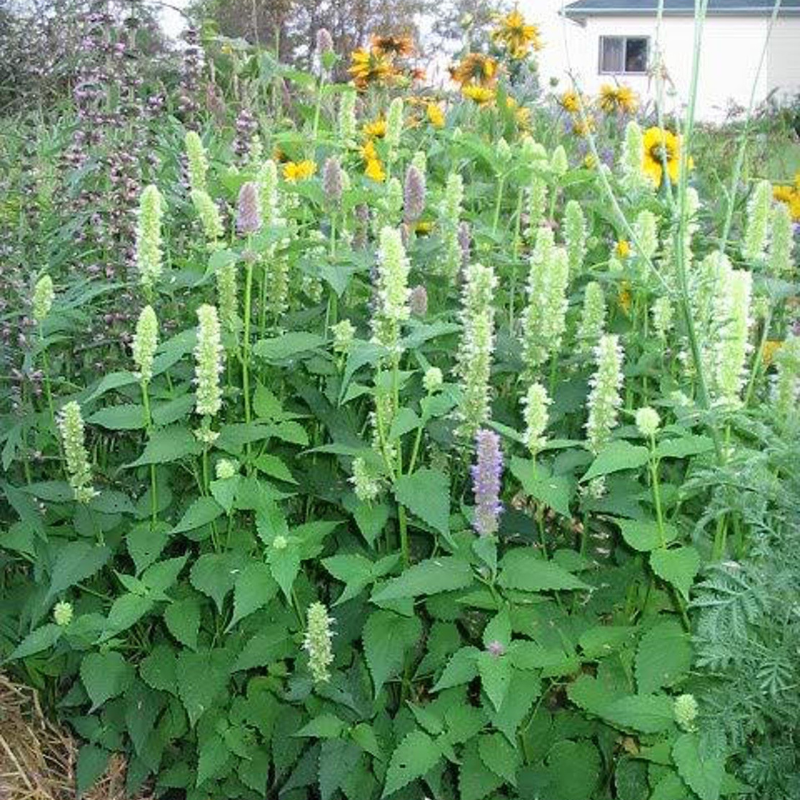- Historical context: Giant Hyssop, also known as Agastache, is a member of the mint family (Lamiaceae) and has been used historically for its aromatic and medicinal properties.
- Geographical origination: Native to North America, particularly the southwestern United States and Mexico.
- Relevant cultural significance: Giant Hyssop has been used by Native American tribes for various medicinal purposes and in traditional ceremonies.
- Time period of discovery: The plant has been known and utilized for centuries, with documented use dating back to indigenous cultures.
- Original habitat: Typically found in prairies, meadows, and open woodlands.
- Notable historical uses: Used in traditional medicine to treat respiratory issues, digestive problems, and as a general tonic. It was also used as a flavoring agent in foods and beverages.
- Ideal temperature range: Grows best in temperatures between 60-75°F (15-24°C).
- Soil type: Prefers well-drained, sandy or loamy soil with a neutral to slightly alkaline pH.
- Sunlight requirements: Requires full sun to partial shade.
- Watering needs: Moderate watering; drought-tolerant once established but benefits from regular watering during dry periods.
- Planting season: Best planted in spring after the last frost or in early fall.
- Germination time: Seeds typically germinate in 14-21 days.
- Growth cycle duration: Perennial plant that can live for several years with proper care.
- Common pests and diseases: Susceptible to root rot if overwatered. Can be affected by aphids, spider mites, and powdery mildew.
- Companion planting advice: Grows well with other herbs like lavender, sage, and thyme. Can also be planted with vegetables like tomatoes and peppers to attract pollinators.
- Common challenges and solutions: Overwatering can lead to root rot; ensure soil is well-drained. Regularly check for pests and treat with organic insecticides if necessary.
- Nutritional values: Rich in essential oils, vitamins, and minerals.
- Health benefits: Known for its anti-inflammatory, antimicrobial, and antioxidant properties. Used to support respiratory health, digestive health, and overall immune function.
- Culinary uses: Leaves and flowers can be used fresh or dried in teas, salads, and as a seasoning for meats and vegetables.
- Medicinal uses: Traditionally used to treat colds, coughs, and digestive issues. Also used in aromatherapy for its calming effects.
- Other unique advantages: Attracts pollinators like bees and butterflies, making it beneficial for garden biodiversity. Its aromatic properties can also act as a natural insect repellent.






